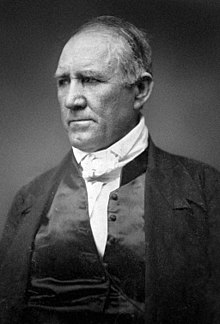Happy Texas Independence Day

From the desk of Jan Hommel, Museum Director:
The Texas Declaration of Independence was produced, literally, overnight. Its urgency was paramount, because while it was being prepared, the Alamo in San Antonio was under siege by Santa Anna’s army of Mexico. The document was the formal declaration of independence of the Republic of Texas from Mexico in the Texas Revolution. During the siege of the Alamo in 1836, a convention of delegates selected five men to draft a Declaration of Independence. It was adopted on March 2, 1836, at the Convention of 1836 at Washington-on-the-Brazos. Sixty delegates from all over Texas signed the declaration. Its language in many ways parallels the 1776 Declaration of Independence of the United States.
The declaration was approved with no debate. Based primarily on the writings of John Locke and Thomas Jefferson, the declaration proclaimed that the Mexican government “ceased to protect the lives, liberty, and property of the people, from whom its legitimate powers are derived” and complained about “arbitrary acts of oppression and tyranny”. The declaration officially established the Republic of Texas.
Among others, the declaration mentions the following reasons for the separation:
• The 1824 Constitution of Mexico establishing a federal republic had been usurped and changed into a centralist military dictatorship by Gen. Antonio Lopez de Santa Anna.
• The Mexican government had invited settlers to Texas and promised them constitutional liberty and republican government, but then reneged on these guarantees.
• Texas was in union with the Mexican state of Coahuila as Coahuila y Tejas, with the capital in distant Saltillo, and thus the affairs of Texas were decided at a great distance from the province and in the Spanish language.
• Political rights to which the settlers had previously been accustomed, such as the right to keep and bear arms and the right to trial by jury, were denied.
• No system of public education had been established.
• The settlers were not allowed freedom of religion.
Based upon the United States Declaration of Independence, the Texas Declaration also contains many memorable expressions of American political principles:
• “the right of trial by jury, that palladium of civil liberty, and only safe guarantee for the life, liberty, and property of the citizen.”
• “our arms … are essential to our defense, the rightful property of freemen, and formidable only to tyrannical governments.”
On March 6, 1836, following a week’s long siege and with few reinforcements, the Alamo fell. Some 182 Texan defenders lost their lives, including William Barrett Travis, David Crockett, and James Bowie, but not before inflicting death on 1,600 Mexicans. Unknown to those fallen Texans, Texas had declared itself an independent republic during the battle on March 2, 1836.
On Palm Sunday, March 27, 1836, another Mexican army surrounded the fort at Goliad, forcing its surrender. Col. James Fanin, along with most of his 400 men, were summarily marched out of town and executed.
With the fall of the Alamo and Goliad, Texas was in a panic. The next few weeks were to be known as the “Runaway Scrape.” The entire population of Anglo Texas, frightened and horrified by tales of Mexican atrocities, fled their homes and farms ahead of the Mexican army. Most able-bodied Texas men had joined General Sam Houston’s army, who had earlier been appointed Texas commander-in-chief.
On April 21, 1836, the two armies met on a grassy field at San Jacinto. The battle lasted only a few minutes. The slaughter took longer. With shouts of “Remember the Alamo” and “Take prisoners like the Mexicans do,” 630 Mexican soldiers lay dead. The Texans lost two men, with seven more to later die from their wounds. Santa Anna was captured and signed the Treaty of Velasco, in which he acknowledged “the full, entire, and perfect Independence of the Republic of Texas.”
TEXAS WAS FINALLY A FREE AND INDEPENDENT NATION!
Although defeated, Mexico refused to recognize Texas independence. A formal state of war continued, although for some years there was no fighting. The Mexican government invalidated the treaties because they were signed under duress, a curious position since any defeated peoples could claim to be “under duress.” In the meantime, a steady stream of immigration was eliminating the wilderness across the northern part of the country.
Sam Houston became the first officially elected President of Texas. On the same ballot, the people of Texas voted overwhelming approval of union with the United States. However, the United States was not quite ready for Texas. The problem was the political situation that had developed within the United States. The question of Texas’ annexation became embroiled in the quarrel over expansion of slavery into the western territories.

Sam Houston
The Lone Star flag flew proudly over the new republic for ten years. Three men would serve as President of the Republic of Texas – Sam Houston (1836-1838, 1842-1844), Mirabeau Lamar (1838-1842), and Anson Jones (1844-1845). Most of their administrations were spent keeping Indians in check and responding to repeated incursions of the Mexican army. Four nations officially recognized the new Republic: France, Belgium, The Netherlands, and Great Britain.
Finally, in early 1845, the Texas question was again presented to Congress and on February 26, 1845, the annexation bill passed. The terms included:
1. Texas would be admitted as a full state;
2. Ownership of all public lands was by the state, not the federal government; and
3. Texas could divide itself into four (4) more states.
Texas approved a new constitution along with annexation and on December 29, 1845, President James K. Polk signed the act that merged Texas into the United States. In a brief ceremony, on February 19, 1846, the Lone Star flag was taken down and the Republic of Texas was no more. President Anson Jones handed over his authority to the new Governor, Pinckney Henderson. Sam Houston and Tom Rusk were new United States Senators from Texas.
